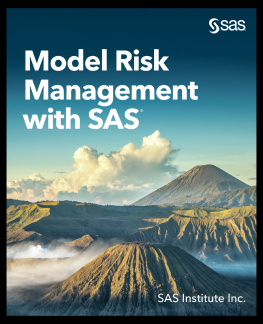The Business Context
Paradigm shifts in the world of international business and economics and a shift from a view that focuses purely on profit to one that takes a more balanced and long-term approach to also address environmental, governance, and social factors have been discussed for many years now. There is a growing understanding that businesses cannot only focus on short-term profitability and internal factors such as productivity improvements to be successful in the long run. On the other side, however, for many business sectors, competition is now truly global and fiercer than ever, making it necessary to have the focus on profitable growth and to being able to react very flexible to changing market requirements. The ancient quote Change is the only constant in life (generally attributed to Heraclitus of Ephesus, a Greek philosopher, who lived from 535 BC to 475 BC) is today more valid than ever.
How can this fast-paced business reality that inevitably aims at profitability, short and long-term, be married with the need to balance long-term financial, environmental, governance, and social impacts and benefits?
The traditional view in environmental management and later in sustainability management can be characterized by:
Concentrating on internal operations (inside the factory walls)
Targeting cost savings through efficiency improvements and related reductions in material and energy use as well as waste generation
Assurance of compliance to regulatory and other explicitly stated requirements (international standards, customer requests, etc.)
Risk management, mainly to avoid liability issues and reputational damage
This perspective, which was shared by most governments and other stakeholders, was prevalent in most business organizations from the early 1990s and well into the new millennium and is still the standard in many organizations today. It is often represented by organizations, where the sustainability function is a sub-function of Environment, Health, and Safety (EHS).
It is obvious that this internally focused cost savings, compliance, and risk management approach can only be a basis, but will never be sufficient to address the aforementioned business challenges and align with the primary profitability goals of any business organization in a market economy.
The Role of Life Cycle Management
This is where life cycle management, first discussed in the pioneering 1st International Conference on Life Cycle Management organized by Allan Astrup Jensen () towards life cycle sustainability management, comes in by:
Expanding the scope to also address upstream (supply chain) and downstream activities (customers and their customers, and products)
Addressing not only environmental but also social and economic aspects throughout the life cycle of products and services
Linking sustainability management and performance of organizations and products to business value and value creation
Expanding the scope means to include the complete value chain, both from the product perspective (life cycle thinking), but also in the sense of value chain cooperation between organizations. With such an approach, organizational and product performance become building blocks of the relationships with suppliers and customers and therefore part of the dialogue and performance criteria between partners in the value chain. This way optimal solutions can be found, looking at the complete picture, and trade-offs and inefficient activities can be avoided.
Linking sustainability to value is all about how sustainability can help to create added value. This goes far beyond cost savings and managing risks and compliance. It is an opportunity to leverage sustainability as an element of differentiation on the market and driver of profitable growth. It is an opportunity to make sustainability a key factor in research and development, operations, procurement, sales and marketing, etc.
How can this be achieved? It is extremely challenging or even impossible to get people excited about doing less bad or just being aligned with regulations and explicit requests (which are unfortunately often only tick the box exercises), but if one leverages the opportunities from an integrated value proposition that takes the sustainability offering into account, one gets to a completely new dimension that can move sustainability out of the green corner and into the business mainstream. And this is not limited to end-producers, who sell products to consumers. It is relevant for the complete value chain, since most of the time the contributions of businesses in the supply chain are essential to implement sustainability for a given end-product or service.
It is important to stress that this value proposition can relate to both direct product performance (e.g., a product with improved environmental life cycle performance) and management performance in the supply chain without measurable changes in the product (such as for ethically sourced products).
Leading businesses that are successful in making life cycle management an enabler that helps to make the day-to-day job of the aforementioned functions more efficient and/or better are achieving an edge and are outperforming their competitors. In order to make this happen, sustainability has to be integrated into standard business processes, very similar to the way quality or cost aspects are integrated today (Remmen et al. ).
Conclusions and Perspectives
In summary one can conclude that life cycle management is an extremely powerful concept and process and can enable businesses and other organizations to make sustainability part of business as usual and deliver real-world improvements for them and their customers. Life cycle sustainability management, if developed and implemented appropriately for a given organization, has the power to move sustainability management from a cost of doing business to a driver of profitability affecting all three elements of the triple bottom line.












